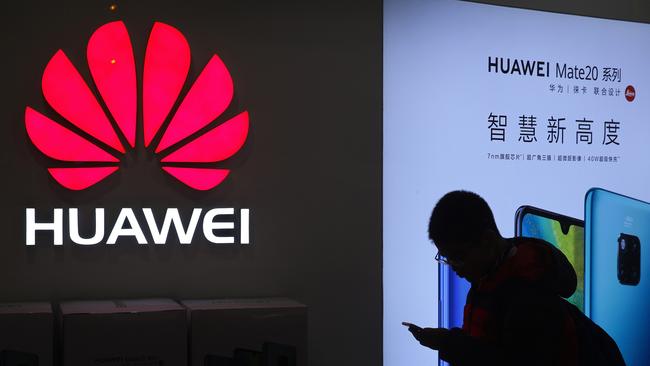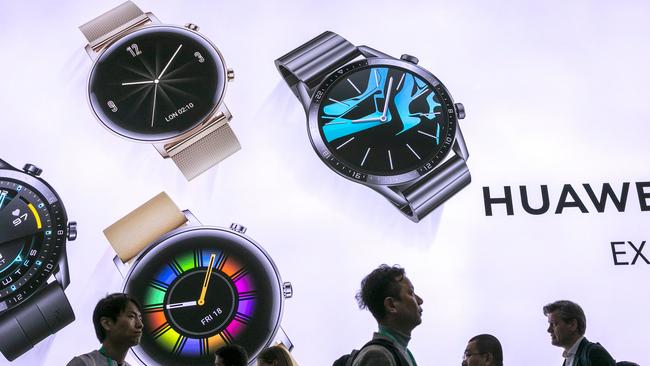Tech tensions simmer ahead of US-China trade truce
As the US and China prepare to sign a trade pact, Washington is split over tech issues relating to Beijing and Huawei.

The US and China are about to declare a pause in their trade war by signing an initial pact at the White House, but a continuing battle over technology is bound to keep relations between the two superpowers on edge.
The Trump administration’s immediate focus is tightening restrictions on Huawei Technologies, the giant Chinese telecommunications company that the White House and Congress view as a national security threat. The Commerce Department recently sent to the Office of Management and Budget new regulations that would largely eliminate a loophole that allowed US companies to sell to Huawei from their overseas facilities, said people familiar with the actions.
Some lawmakers and national security experts say Huawei’s equipment would allow Chinese leaders to spy on Americans, which the company has regularly denied. A Huawei spokesman didn’t immediately return a request for comment on the potential restrictions.
Australia has banned Huawei from its 5G rollout because of security concerns.
China hawks in Congress also have been pushing to limit sales to Huawei, and some are even calling for Washington to subsidise US firms working on next-generation 5G wireless technology, given how much Beijing has subsided Huawei.
At the same time, a team of senior US officials, including deputy national security adviser Matt Pottinger, earlier this week lobbied the UK to block local network operators from using equipment from Huawei and other Chinese vendors in their 5G networks. A British decision is expected shortly.
More broadly, the National Security Council last week asked the Commerce Department to suggest regulations to restrict sales of any US technology to China, according to people tracking the early-stage discussions.
Should all the efforts bear fruit, nearly any technology exports to Huawei in particular, and China in general, would require export licenses. While Commerce could grant such licenses, US companies fear their Chinese customers would turn to other suppliers, making them uncompetitive internationally. In 2018, about 36 per cent of US semiconductor company revenues, or $US75 billion, came from sales to China, the Semiconductor Industry Association estimates.
The technology offensive comes at the two nations are calling a truce in their two-year trade war. President Donald Trump and Chinese Vice Premier Liu He are scheduled to sign an initial trade pact on Wednesday in the White House as broader negotiations continue. The agreement calls for increased Chinese purchases of US goods and services, toughened protection in China of US intellectual property and liberalisation of the Chinese financial services market so US companies can better compete there. In exchange, the US has agreed to halve tariffs on $US120 billion of Chinese goods to 7.5 per cent and to suspend plans for other tariffs.
The twin efforts -- cracking down on technology exports while easing tariffs -- represent different factions within the administration that are competing for the president’s attention, say government officials. While there is broad agreement in the administration that China’s power should be checked, there is no consensus among or even within various agencies on the best approach.
National security officials also argue the US can push hard on issues like technology, human rights and a Chinese military build-up even as the administration eases off on the trade fight.
Congress, meanwhile, plays a bigger role on export controls than on other trade matters, and some lawmakers take a harsh view of China. In 2018, Congress passed a law requiring the administration to come up with a list of emerging technologies whose sales to China and other countries would be limited.
“Most of the national security types -- they could care less about soybeans,” said Chris Krueger, a strategist at Cowen & Co, referring to the phase-one deal’s provisions for additional farm goods purchases, which has been a Trump priority.
It isn’t clear whether Mr Trump would approve the changes being sought. Treasury Secretary Steven Mnuchin, who has resisted efforts to use powerful Treasury sanctions to hobble Huawei, could also try to intervene for fear of upsetting overall relations with China, say industry executives who have lobbied him.
On Huawei, there is widespread frustration within the administration that a move in May to place the company on the Commerce Department’s blacklist, formally called the entity list, didn’t have much effect on the company’s growth. In late December, Huawei reported that its revenue rose about 18 per cent to a record $US122 billion -- in part because US companies figured out ways to continue supplying Huawei. Much of what US companies supply the Chinese telecom doesn’t usually require a license.
If chips and other components are produced overseas and contain less than 25 per cent US-made content subject to export restrictions, those goods can be shipped license-free to Huawei. Commerce’s proposed rule would reduce that percentage to 10 per cent when it comes to Huawei, say people familiar with the discussions. Items that don’t qualify would require an export license.
The rule’s “interim final” designation allows it to take effect without a formal comment period. The semiconductor industry has lobbied heavily to get that reversed, including meeting with Commerce Secretary Wilbur Ross, shortly before Christmas, but without success.
“Because the US does not have a monopoly on technology, companies in the US would cede significant market share and revenue to global competitors,” SIA President John Neuffer said in a December letter to Mr Ross.
The rule would take effect once the departments of State, Commerce, Defence and Energy sign on. Industry then could comment, but such appeals rarely have any impact. The US could take to court or sanction any company that breaks the restrictions.
There are divisions within Commerce and Defense over the rule. Some in the Pentagon worry the change would hobble US companies and their ability to innovate. Some Commerce officials have fended off even more stringent rule changes.

The National Security Council effort is more far-reaching but at a preliminary stage, and its target is China broadly, not just Huawei, said the people following the discussions. NSC officials asked Commerce to consider different strategies, including requiring companies to get export licenses for chips made outside the US that make any use of US technology. That would apply not just to American companies but also the many instances in which foreign firms whose products incorporate American technology.
Tech industry critics say the Commerce and NSC measures would create a big incentive for US companies to locate their research and development efforts abroad. But others at the NSC, including Mr. Pottinger, believe US firms must sever relations with Huawei. He told SIA officials at a contentious meeting in September that they needed to better recognise the threat Huawei posed. US companies must develop “ways to support an ecosystem for telecom infrastructure and IT infrastructure that the free world can trust, instead of saying, ‘We need the China market so badly that we need to deprioritize our national security,’” Mr Pottinger said later in an interview, explaining his thinking.
The battle has also played out in Congress. Last year, 19 lawmakers -- 11 Republicans and eight Democrats -- floated three separate bills that would make it harder for Commerce officials to remove Huawei from the list. Two of the three bills would have required Congress to vote on the removal. What passed didn’t include that requirement, but some lawmakers have pledged to continue applying pressure.
Separately, a bipartisan group of senators proposed a measure that would steer at least $US750 million toward approved firms developing 5G wireless technology and create a separate $US500 million fund for companies that deploy “trusted and secure” equipment around the world.
Wall Street Journal






To join the conversation, please log in. Don't have an account? Register
Join the conversation, you are commenting as Logout